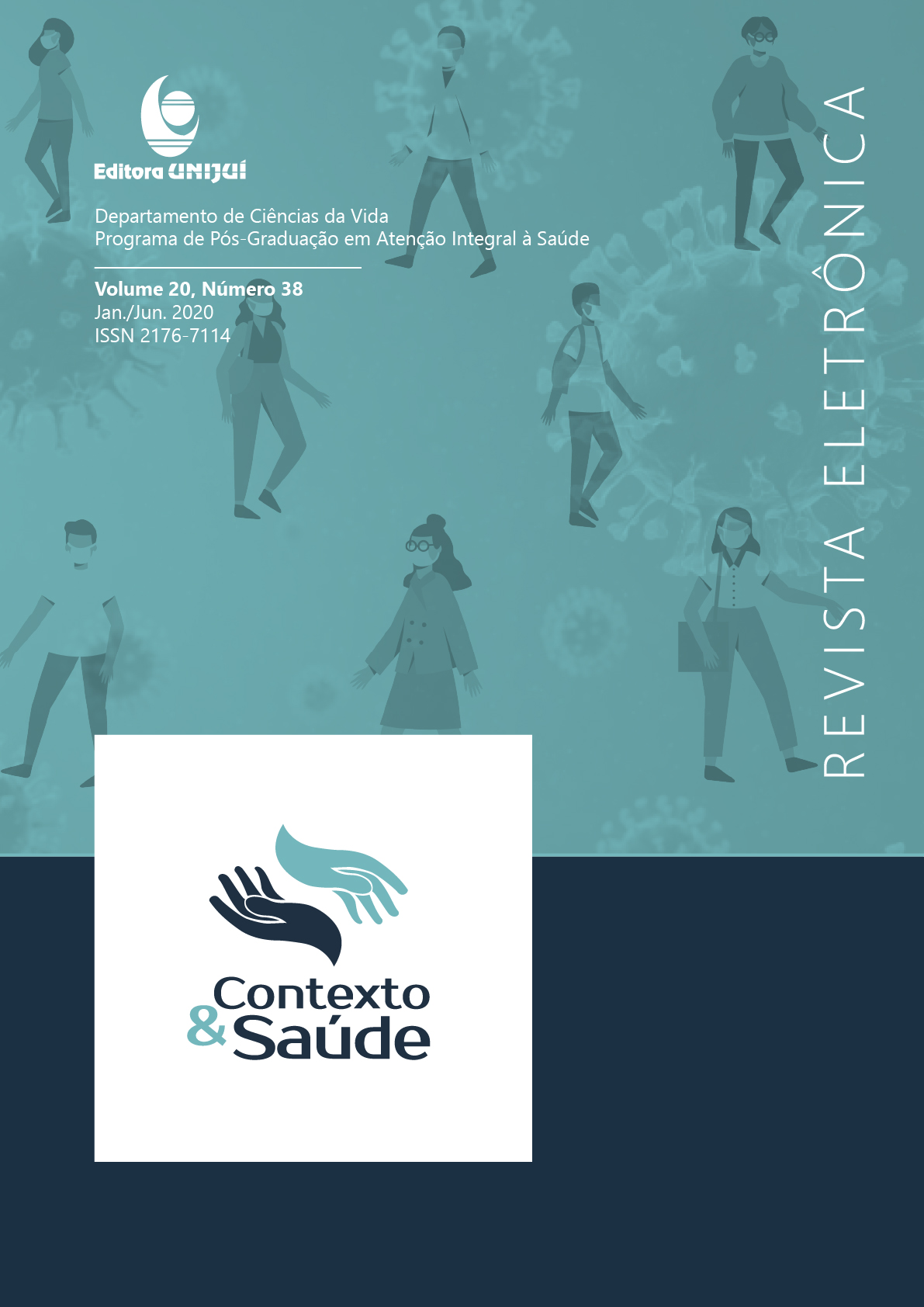PERFIL BIOQUÍMICO E NUTRICIONAL DE VEGETARIANOS E ONÍVOROS DE UM MUNICÍPIO DE SANTA CATARINA, BRASIL
DOI:
https://doi.org/10.21527/2176-7114.2020.38.145-154Keywords:
antropometria, vitamina b12, perfil lipídicoAbstract
O objetivo foi avaliar marcadores bioquímicos e nutricionais e a associação com a composição corporal de vegetarianos e onívoros do município de Criciúma - SC. Foram avaliados: parâmetros plasmáticos, níveis séricos de vitamina B12 (nos vegetarianos), índice de massa corporal, circunferência da cintura, composição corporal, motivos para a dieta vegetariana e tempo de vegetarianismo e questionário socioeconômico. Participaram da amostra 34 indivíduos adultos, sendo 11 ovolactovegetarianos, 11 veganos e 12 onívoros, com idade média de 25,24 anos e predominância do gênero feminino. Na classificação do estado nutricional, 97% dos avaliados apresentou IMC eutrófico. A circunferência da cintura esteve adequada nos ovolactovegetarianos (90,9%), veganos (81,8%) e com risco moderado nos onívoros (33,3%). Verificou-se que entre os ovolactovegetarianos (27,3%) e veganos (18,2%) houve excesso de gordura corporal e percentil de massa magra (AMB) muito baixo (36,4%). O colesterol total estava normal em 100% dos ovolactovegetarianos, 81,8% dos veganos e nos onívoros apresentou-se alto em 58,3%. Na glicemia, 50% dos onívoros estavam com risco aumentado para diabetes, enquanto 100% dos ovolactovegetarianos e 81,8% veganos apresentaram normoglicemia. Ocorreu maior predominância de indivíduos onívoros (41,66%) com hemoglobina abaixo do ideal e indicativo de anemia, contra 27,3% nos vegetarianos. Já os níveis séricos de vitamina B12 nos vegetarianos apresentaram-se dentro dos valores ideais, com uma média em 362,86pg/ml. Concluímos que os vegetarianos apresentam melhor perfil lipídico e glicêmico, quando comparados aos onívoros.
Downloads
Published
How to Cite
Issue
Section
License
By publishing in Revista Contexto & Saúde, authors agree to the following terms:
The works are licensed under the Creative Commons Atribuição 4.0 Internacional (CC BY 4.0) license, which allows:
Share — to copy and redistribute the material in any medium or format;
Adapt — to remix, transform, and build upon the material for any purpose, including commercial.
These permissions are irrevocable, provided that the following terms are respected:
Attribution — authors must be properly credited, with a link to the license and indication of any changes made.
No additional restrictions — no legal or technological measures may be applied that restrict the use permitted by the license.
Notes:
The license does not apply to elements in the public domain or covered by legal exceptions.
The license does not grant all rights necessary for specific uses (e.g., image rights, privacy, or moral rights).
The journal is not responsible for opinions expressed in the articles, which are the sole responsibility of the authors. The Editor, with the support of the Editorial Board, reserves the right to suggest or request modifications when necessary.
Only original scientific articles presenting research results of interest that have not been published or simultaneously submitted to another journal with the same objective will be accepted.
Mentions of trademarks or specific products are intended solely for identification purposes, without any promotional association by the authors or the journal.
License Agreement (for articles published from September 2025): Authors retain copyright over their article and grant Revista Contexto & Saúde the right of first publication.

